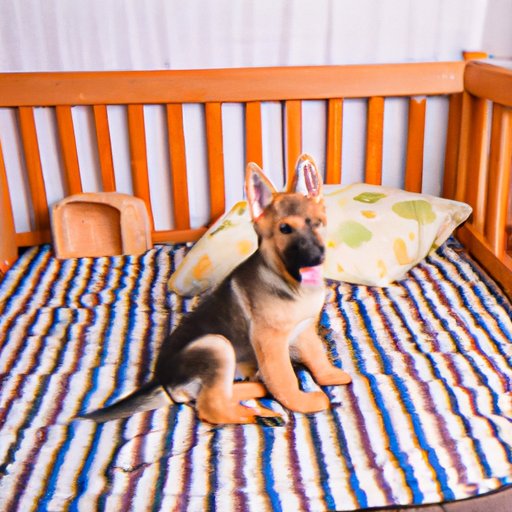
Introduction
Crate training is an essential part of being a responsible dog owner. This method involves introducing your puppy to a crate, gradually increasing their time inside, and using positive reinforcement techniques to ensure they associate the crate with security and comfort. Crate training is beneficial to both the owner and the dog, as it can prevent destructive behavior, accidents, and anxiety. This article is intended for new puppy owners looking to crate train their furry friends, or anyone interested in learning more about the process.
Step-by-Step Guide to Crate Training a Puppy
The first step to successfully crate training a puppy is to introduce the crate to them. The crate should be a safe and secure space that the puppy associates with comfort and safety. You can use treats and praise to encourage your puppy to enter the crate on their own. Gradually increase the amount of time your puppy spends in the crate, until they are comfortable being inside for several hours at a time. It’s important to offer your puppy toys or a special blanket to make their time in the crate more enjoyable.
Creating a Safe Space for the Puppy
A crate can provide puppies with a sense of security and comfort. It can also make it easier for you to bond with your new puppy. By providing your puppy with a safe and secure space that they can retreat to when feeling overwhelmed or anxious, you can build trust and a positive relationship with them.
Positive Reinforcement Techniques During Crate Training
Positive reinforcement is key to creating a positive association with the crate. Using treats and praise to encourage your puppy to explore and enter the crate can help them to feel safe and comfortable. By rewarding your puppy for going into the crate, you can create a positive reinforcement loop that will make it more likely that they will enter the crate willingly in the future.
Approach Crate Training Gradually
It’s important to approach crate training gradually to avoid overwhelming or alarming your puppy. Start by placing treats near the crate and eventually inside the crate to encourage your puppy to explore. Once they are comfortable inside the crate, gradually increase the amount of time they spend in it.
Consistency in Crate Training
Consistency is critical when it comes to crate training. Establishing a routine can help your puppy feel more secure and relaxed in their crate. This includes feeding times, exercise schedules, and play times. Try to keep the same schedule every day to help your puppy establish a routine and feel more comfortable in their crate.
Troubleshooting Common Crate Training Issues
Like with any training method, certain issues may arise during the crate training process. For example, your puppy may cry or bark when inside the crate, or they may refuse to enter the crate altogether. To address these issues, it’s essential to understand why they are occurring and implement the correct solution.
Follow-Up Care for Crate Training
Once your puppy has become comfortable with their crate, it’s essential to maintain good habits to ensure they continue to use it effectively. These include making sure the crate is clean and comfortable, encouraging them to use it as a sleeping area, and providing toys or puzzles to keep them entertained while inside. However, it’s important to remember that your puppy should not be left in their crate for too long. Puppies need plenty of social interaction and exercise.
Conclusion
Crate training is essential for puppy owners as it can prevent destructive behavior, accidents, and anxiety. Following this step-by-step guide, using positive reinforcement, taking things slowly, and remaining consistent can help you establish good crate training habits. Troubleshooting and ensuring follow-up care are essential elements of the process. Finally, remember that a crate is not a substitute for attention, socialization, and exercise. Establishing a good routine and maintaining healthy habits will help your puppy to thrive.




